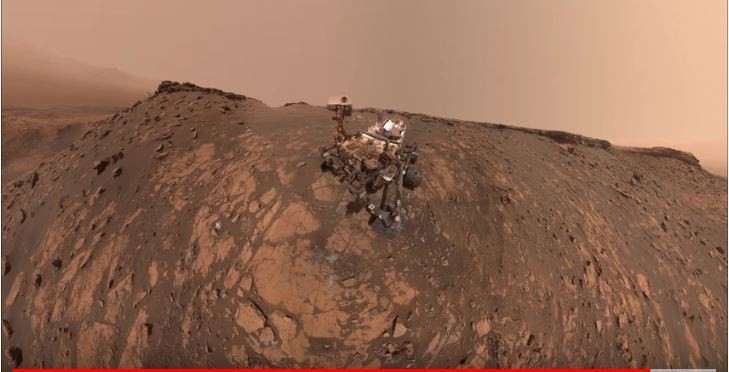
The Curiosity rover of NASA just occupied what's described as a "major milestone on Mars." And, to celebrate such an achievement, it took a selfie of itself.
In a report from sci-news.com, it indicated that Curiosity recently set a record as it finished a climb as it rolled up its steepest hill, called the Greenheugh Pediment.
This sharpest hill it climbed is said to have created a tilt of 31 degrees for the rover. Formerly, the lone rover to encounter more of a slope was identified as the Opportunity rover's record set at 32 degrees in 2016.
Incidentally, around 11 feet before Curiosity rover reached the wide-ranging rock sheet on top of the heel. Then, it stopped for a while by taking a panorama at 360 degrees.
The cameras of the rover captured about 86 images that made "panoramic selfie."
Relatively the selfie takes the rover about 3.4-meters underneath the point where it scaled onto the disintegrating pediment. More so, Curiosity finally got to the slope's top early this month, specifically on March 6.
It took the rover three times to climb the hill, the second of these three, tilted it at 31 degrees. This, according to report, was the most the rover ever tilted on the Red Planet, and just shy of the already-inactive Opportunity rover at a tilt record of 32 degrees which was set in 2016.
Before the Climb
Prior to the climb, Curiosity was using the black-and-white Navigation Cameras positioned on its mast for the first time, to record a short video of its "selfie stick," which is also known as its very own "robotic arm."
Meanwhile, the curiosity of the mission is to study if the environment in mars could have sustained bacterial life billions of years ago.
One of the tools for finding out the result is called, the MAHLI or the Mars hand Lens Camera which is positioned in the rover's turret at the end of its 'selfie stick' or robotic arm.
Essentially, the camera is providing a close-up vision of rock textures and grains, in the same way as to how geologists make use of a handheld magnifying glass so it can have a closer and clearer vision of the field on Earth. This is done by rotating the turret or tower part, to face the rover, particularly, Curiosity.
In connection with this, MAHLI can also be used to display Curiosity. And, since every MAHLI image covers just a small area, it necessitates a lot of arm positions and images to completely capture the rover, including its surroundings.
According to Dr. Doug Ellison, a Jet Propulsion Laboratory researcher at NASA, they frequently get asked: "how Curiosity takes its selfie."
Therefore, he added, they thought, the most ideal way to answer the question and explain, it further, would be, have the rover show the public from its own viewpoint just how the "selfie" is done.










